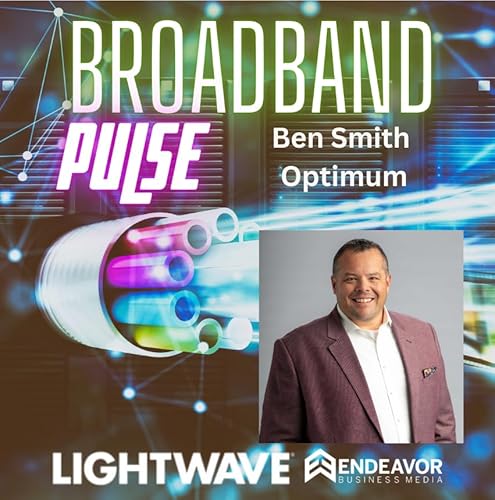Founded in 2023 in Houston, Texas, by Carter Old and SDC Capital Partners, Lyte Fiber focuses on delivering fiber-based broadband in Texas and beyond. Old, a former US Navy officer, has extensive experience in developing new approaches to broadband delivery and financial expertise across various industry segments. Lyte Fiber is not Old's first fiber rodeo. Before co-founding Lyte Fiber, he co-founded Tachus, which fellow fiber broadband provider Ezee Fiber recently acquired.
Lyte offers both residential and business internet service plans supported by an XGS-PON access network capable of delivering up to 10 Gbps. Today, Lyte Fiber serves nine Texas communities and plans to expand further in the coming year. Old acknowledged that while the fiber broadband industry is “really competitive,” there’s a big opportunity to address underserved communities with fiber-based broadband services.
Here's a timeline of the interview's key moments:
Opening | 0.00
Host introduction of guests | 0:03
Founding Lyte Fiber | 0:18 Old discusses how he worked with SDC Capital to form his latest startup.
Network expansion | 3:13 How Lyte Fiber has prioritized fiber builds in underserved communities.
Engaging with communities | 5:35 Lyte Fiber focuses on leading first with building long-term relationships.
Fiber’s community impact | 8:02 How the presence of fiber-based broadband makes a community more attractive for existing and new residents.
Underserved communities | 11:43 Old addresses the challenges of bringing fiber to underserved communities.
Community permitting | 13:12 As it moves to get fiber lit in 15 markets, permitting is an all-hands-on-deck effort.
Navigating the Broadband Equity Access and Deployment Program (BEAD) Program | 15:11 The state of Texas recently awarded Lyte Fiber $142 million to connect seven communities.
The broadband M&A wave |18:41 Lyte Fiber is actively evaluating potential opportunities.
Broadband competition | 20:22 Within Lyte Fiber’s markets, the provider mainly faces competition from cable operators.
Final thoughts/closing | 23:17 Looking ahead, Lyte Fiber will focus on scaling, delivering solid customer service, ensuring network reliability, and addressing each community’s needs.
About our guest
Carter Old is Founder and CEO of Lyte Fiber, LLC, a Texas-based fiber broadband internet company formed in partnership with SDC Capital Partners. Before he founded Lyte, Carter co-founded Tachus, LLC, a Houston-based fiber broadband internet company that he helped build and grow to nearly 160 employees, 70,000+ passed homes, and 20,000+ customers in three and a half years. Under his leadership, Tachus raised over $190 million in total debt and equity capital. While at Tachus, he and his business partner were named finalists for the 2022 Ernst & Young Entrepreneur of the Year® Central South Awards. In addition to his fiber broadband experience, Old was the co-founder of OmniEarth, an Earth intelligence and analytics company based in Arlington, VA. He also worked at Fieldstone Partners, where he served as Senior Vice President and COO and co-led Fieldstone’s space and ground infrastructure business areas.
Earlier, Old served on active duty for four years as a Surface Warfare Officer in the U.S. Navy. He was initially the First Lieutenant and then the Naval Infantry Officer for USS BULKELEY (DDG 84) on his first tour, and then the Operations Officer for MCM CREW LEADER on his second tour. He attended the University of Texas at Austin on a Navy ROTC scholarship and graduated with a B.A. in Government. He also has an M.B.A. from UT-Austin.
About the Podcast In the Lightwave Broadband Pulse podcast, we address key issues affecting the optical and broadband industries. Join us every week for insights from industry leaders on these topics. Visit our website at www.lightwave.com and click on our podcast site at www.broadbandpulse.podbean.com/.
 28 mins
28 mins 10 mins
10 mins 21 mins
21 mins 11 mins
11 mins 21 mins
21 mins 17 mins
17 mins 9 mins
9 mins Nov 11 20257 mins
Nov 11 20257 mins
